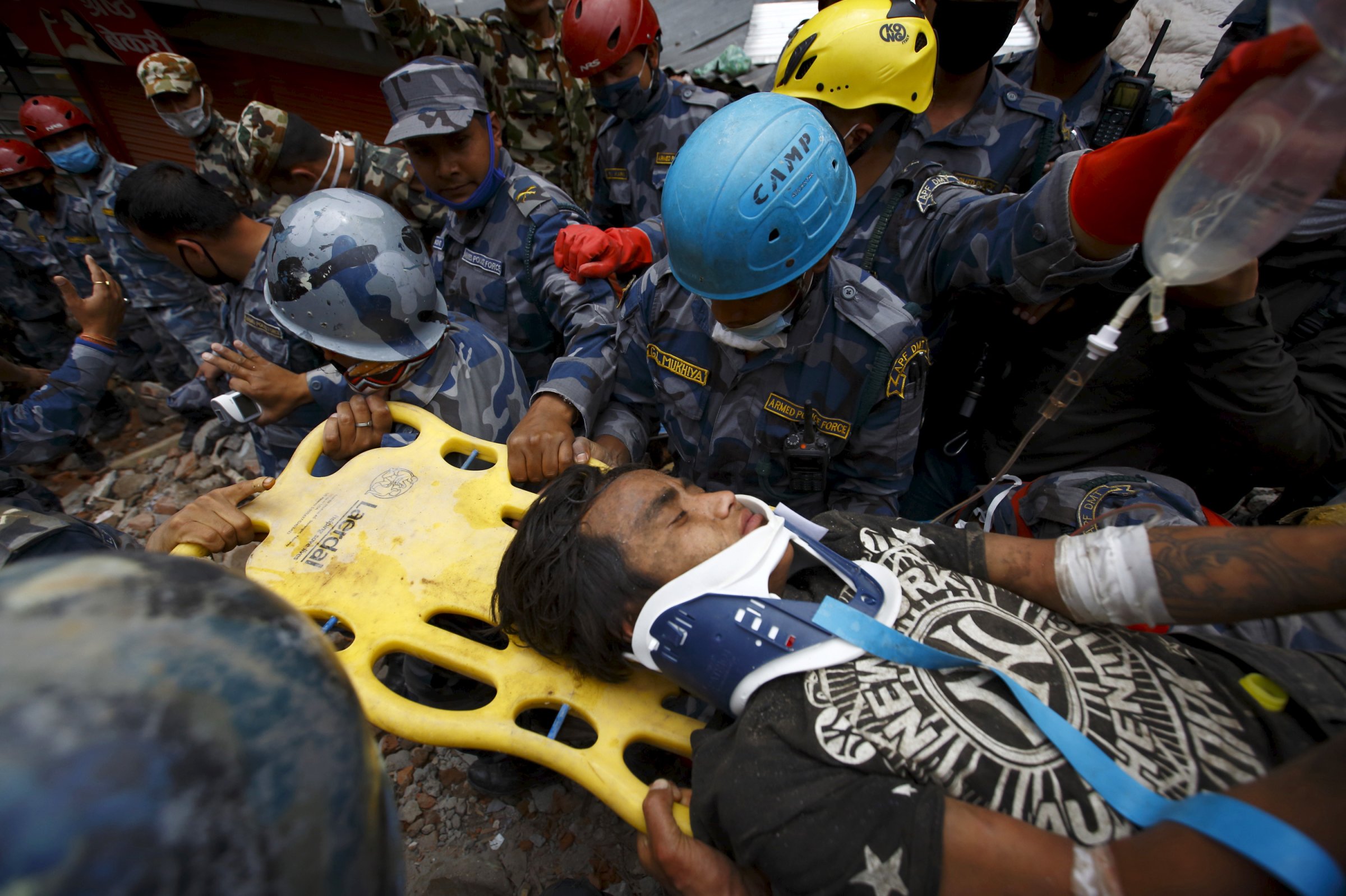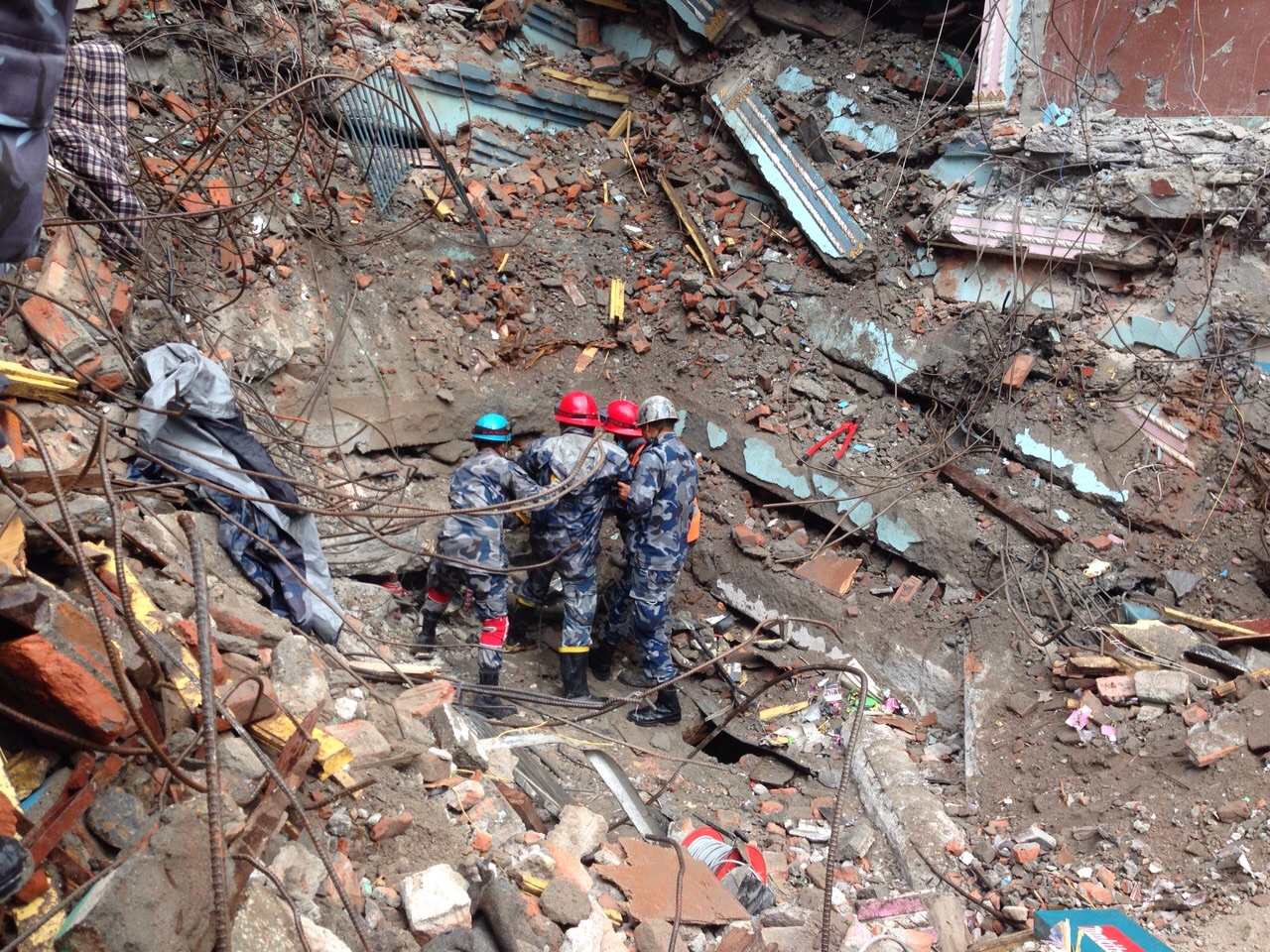
A 18-year-old man was miraculously rescued in Kathmandu on Thursday, five days after the house where he was sheltering collapsed during Nepal’s devastating earthquake.
Bystanders roared as Pemba Tamang, caked in thick red dust, was ferried out of harm’s way on a stretcher with an intravenous drip in his arm, blinking at the midday light.
American medic Dennis Bautista administered drugs to Tamang to guard against any potential crush syndrome. “I can’t imagine what it must have been like,” Bautista tells TIME, “he was incredibly brave.”
An army of volunteers had swarmed on the narrow, multi-colored residential and commercial neighborhood of the capital where the young victim was discovered under layers of pancaked floors of reinforced concrete that had once been a seven-story building.
Lying flat with a corrugated iron sheet above, Tamang could be seen squirming with his arms pinned by his sides. “I’m cold,” he murmured, and a bystander immediately ripped off his scarf and passed it forward. Others scrambled to find him a jacket and locate flat pieces of wood to secure and widen the opening to the hole.
Nepali rescue workers — wearing camouflage uniforms, knee pads and red helmets — struggled for what seemed an eternity to remove a motorbike that was crushed between the floors and blocked the opening of a 10-ft-deep pit where Tamang lay.
American and French aid workers loitered at the periphery offering equipment and preparing medical care for when he was cut free, dolling out pink and red glowsticks to arriving Nepalese officials.
“This is your site, I’m here to help and assist you,” Andrew Olvera, a urban search and rescue member of AUSAID’s DART team, who had been leading a team of search dogs five blocks away when the boy was spotted, told his Nepali counterpart.
“We’ll ask you if we need something,” came the reply, as a throng of around 40 local police hung around snapping photos on their mobile phones. A rotatable camera on a telescopic pole was also deployed to see how best Tamang could be freed.

More than 5,500 people have been confirmed dead in Saturday’s 7.9-magnitude earthquake, and as many feared the trickle of survivors dragged from the rubble had finally stopped, there was a renewed determination to save this young victim.
A generator was fired up and an array of Makita saws and jackhammers whirred into action, kicking up a choking mix of dust and smoke. First, the back wheel of the prone motorcycle had to be surgically removed to improve access.
A hot stick checked for live wires at the opening of the pit, which was a twisted mess of rebar stripped of their outer concrete shell. Eventually jacks were used to pry apart the concrete slabs and allow rescuers to squirm inside.
As rescuers descended into the void, the fear of more aftershocks unsettling the tumbledown buildings was upmost in everyone’s mind. Thankfully, Tamang was carried out into the seasonal drizzle as a symbolic triumph amid a city drenched in loss.
More Must-Reads from TIME
- How Donald Trump Won
- The Best Inventions of 2024
- Why Sleep Is the Key to Living Longer
- Robert Zemeckis Just Wants to Move You
- How to Break 8 Toxic Communication Habits
- Nicola Coughlan Bet on Herself—And Won
- Why Vinegar Is So Good for You
- Meet TIME's Newest Class of Next Generation Leaders
Write to Charlie Campbell at charlie.campbell@time.com